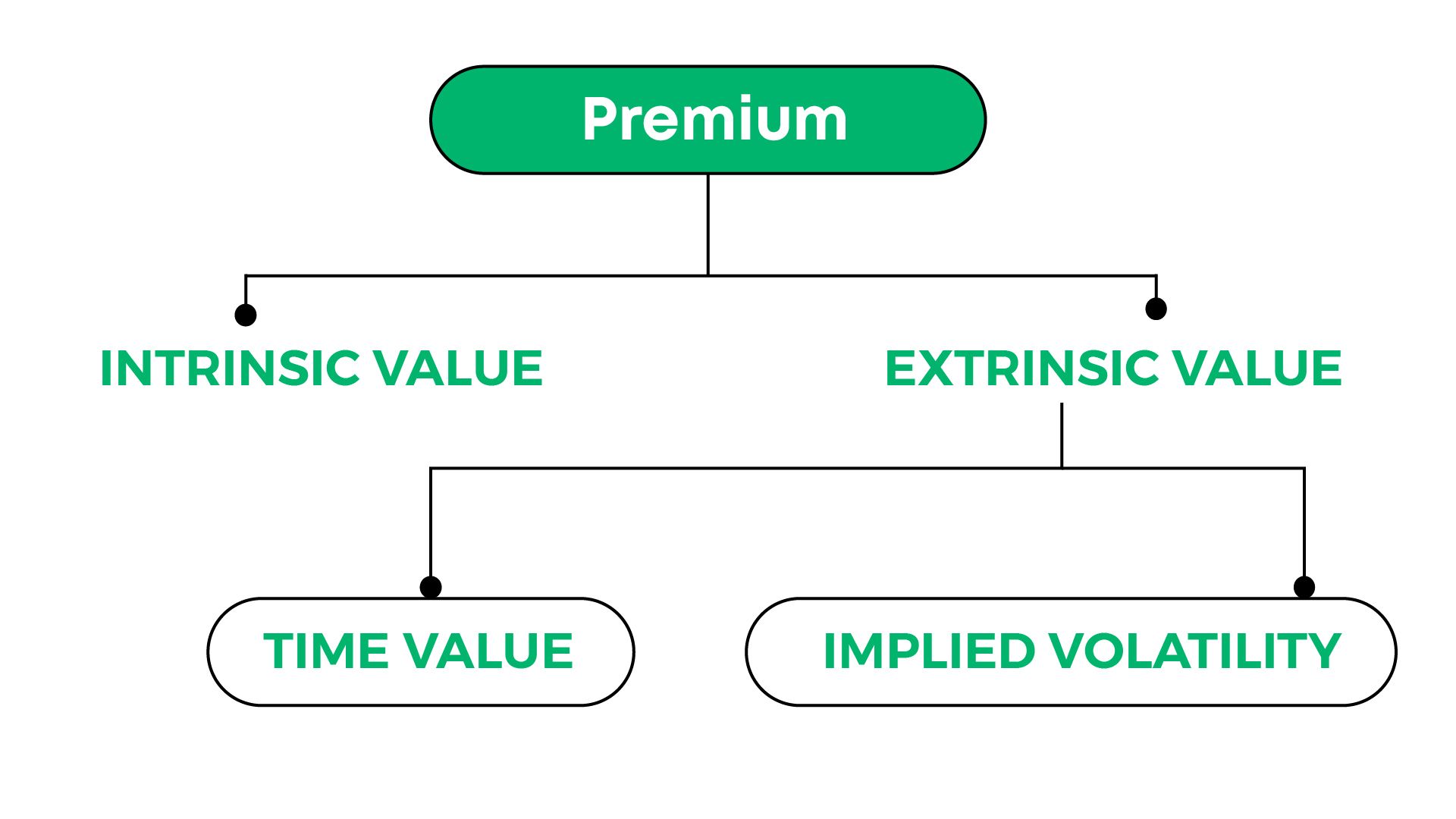Time Value: Definition and Role in Extrinsic Value

What Is Time Value?
Time value refers to the portion of an option’s premium that is attributable to the amount of time remaining until the expiration of the option contract. The premium of any option consists of two components: its intrinsic value and its extrinsic value. Intrinsic value refers to the difference between the price of the underlying asset and the strike price of the option.
Extrinsic value, on the other hand, is determined by factors such as time remaining until expiration, implied volatility, and interest rates. Time value is a component of an option's extrinsic value and relates to derivatives markets. It should not be confused with the Time Value of Money (TVM), which describes the discounting of money's purchasing power over time.
The Basics of Time Value
The price (or cost) of an option is an amount of money known as the premium. An option buyer pays this premium to an option seller in exchange for the right granted by the option: the choice to exercise the option to buy or sell an asset or to allow it to expire worthless.
An option's total premium is based on its intrinsic plus extrinsic value. A key part of extrinsic value is known as "time value". Under normal circumstances, a contract loses value as it approaches its expiration date because there is less time for the underlying security to move favorably. In other words, an option with one month to expiration that is out of the money (OTM) will have more extrinsic value than that of an OTM option with one week to expiration. The longer the time remaining until expiration, the greater the time value of the option.
Another factor that affects extrinsic value and time value is implied volatility (IV). IV measures the amount an underlying asset may move over a specified period. If the IV increases, the extrinsic value will also increase. For instance, if an investor purchases a call option with an annualized IV of 20% and the IV jumps to 30% the following day, the extrinsic value would rise as investors figure that dramatic moves boost the possibility of the asset moving their way.
Calculating Time Value
As an equation, the time value might be expressed as:
Option Premium - Intrinsic Value = Time Value + Implied Volatility
Or, to put it another way: the amount of a premium that is in excess of the option's intrinsic value is referred to as its time value. For example, if Alphabet Inc. stock is priced at INR 1,044 per share and the Alphabet Inc. INR 950 call option is trading at INR 97, then the option has an intrinsic value of INR 94 (1,044 - 950) and a time value of INR 3 (97 - 94).

The Significance of Time Value
As a general rule, the more time that remains until expiration, the greater the time value of the option. The rationale is simple: Investors are willing to pay a higher premium for more time since the contract will have longer to profit from a favorable move in the underlying asset. This is because the longer the time remaining until expiration, the greater the probability of the option becoming profitable.
Conversely, the less time that remains on an option, the less premium investors are willing to pay, because the probability of the option having the chance to be profitable is shrinking. For this reason, it's safer to sell or hold an option that still has time value left, rather than exercising it; otherwise, that remaining time value would be lost. It is important to note that an option loses one-third of its time value during the first half of its life, and the remaining two-thirds of its time value during the second half. Time value decreases over time at an accelerating pace, a phenomenon known as time decay or time value decay. An option price's sensitivity to time decay is known as its theta.
In summary, time value is a key concept in options trading and is one of two components that make up an option's extrinsic value. The longer the time remaining until expiration, the greater the time value of the option. Time value is impacted by factors such as implied volatility, and options with more time remaining until expiration are generally more valuable than those with less time remaining.
Learn Option series next reads:



